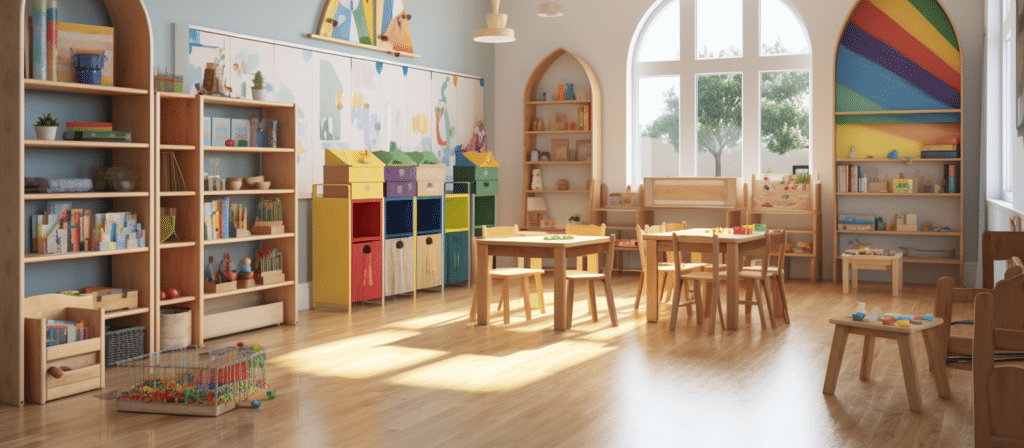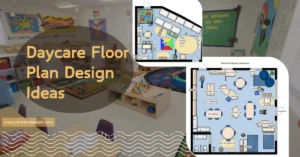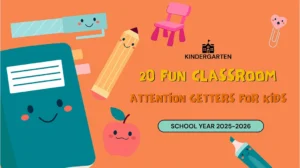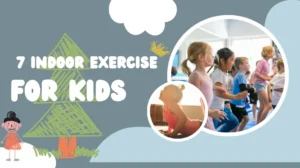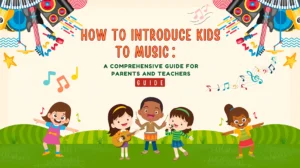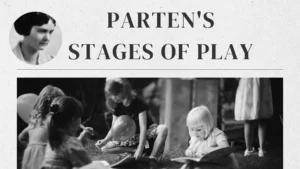As we step into a new era of educational innovation, the time has come to reimagine the optimal indoor environment for young children. A voyage through time and experiences brings me back to my initial school days in a centuries-old farmhouse. Those wattle and daub walls exuded history, the black oak beams whispered tales of the past, yet the allure of the outdoors always beckoned, promising adventure and knowledge amidst the farm’s enchanting beauty.
Nurturing Environments for Tender Minds
Whether educators or not, we all hold a notion of the perfect environment for the care and education of young minds. In my perspective, this ideal space resides outdoors for a multitude of reasons:
- A Symphony of Change: Children thrive on novelty, drawn to the ever-shifting panorama of nature. The sun’s dance across the sky, casting changing shadows, the metamorphosis of seasons embracing every facet of the natural world, and the capricious weather offering endless avenues of play and exploration. Snowflakes become building materials, rain transforms into a wading pool, and the wind composes symphonies through rustling leaves.
- Nature’s Palette: The outdoors generously showcases the spectrum of colors, from the azure canvas of the sky to the emerald carpet of fields, from the subtle gray mist to the scarlet sea of poppies. Here, children’s eyes feast on a kaleidoscope of hues, a prelude to their encounters with paint, crayons, books, and pens.
- Responsive Playground: A pond responds with ripples to a tossed pebble, a heap of leaves cradles tired bodies, and stones become architects of dams and miniature homes. Nature converses with children, offering them a sense of agency and a canvas to paint their impact upon.
- STEM Foundations in the Wild: The seeds of STEM (Science, Technology, Engineering, and Mathematics) education are sown effortlessly in the great outdoors. Stacking stones, constructing forts, diverting streams, observing life cycles, and melting snow for sustenance cultivate an organic understanding of these disciplines (Committee for STEM Education, 2018).
Yet, the practicalities of modern life often keep young souls indoors, away from the natural wonders that await. This dilemma beckons educators to shape indoor classrooms that encapsulate these elemental attributes.
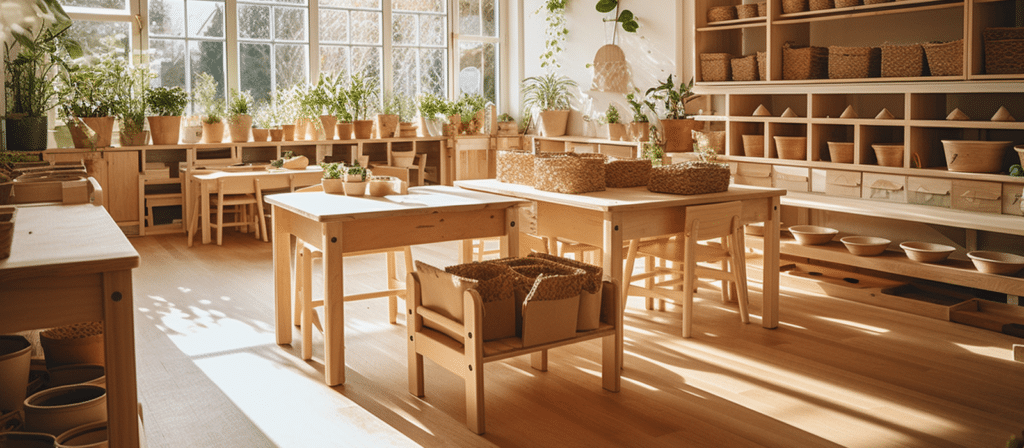
Designing the Inner Sanctum
The inception of programs like Head Start witnessed humble beginnings, with child care centers adapting to whatever spaces were available. Church basements, converted houses, and aging school rooms became the canvas for early educational pursuits. However, the evolving canvas of classroom design has been touched by myriad influences: the desire to impress parents and administrators, the integration of pedagogical philosophies into design, and insights from research on how the environment influences learning, behavior, and cognitive growth.
Tracing the Threads of Tradition
No discourse on classroom design, furniture, and equipment is complete without acknowledging the indelible mark of Montessori. In the words of Montessori, the child’s surroundings should exude allure, fostering an environment where discoveries are made amidst beauty. The Montessori approach’s resonance with quality and esteem has transcended cultures, setting a precedent for early childhood classroom aesthetics.
This legacy paved the way for a standardized approach to design, with light hues, gentle hardwoods, and an orderly arrangement. The aim was to create an unobtrusive backdrop against which children’s creativity and curriculum could flourish, sans overwhelming clutter (Greenman, 2005).
Metamorphosis Beckons
The winds of change now usher in a fresher perspective on the quintessential indoor haven for young minds. Today’s classrooms, more capacious and well-lit, harbor a closer connection to the outdoors. The practice of “bringing the outdoors in” thrives as a bridge between environments.
Furthermore, we possess the knowledge to reconfigure spaces, injecting novelty and challenge without inundating the senses. Wide windows and transition zones blur the line between indoors and outdoors, opening new vistas. Educators, too, adapt and modify the environment throughout the school year, synchronizing it with evolving curricula.
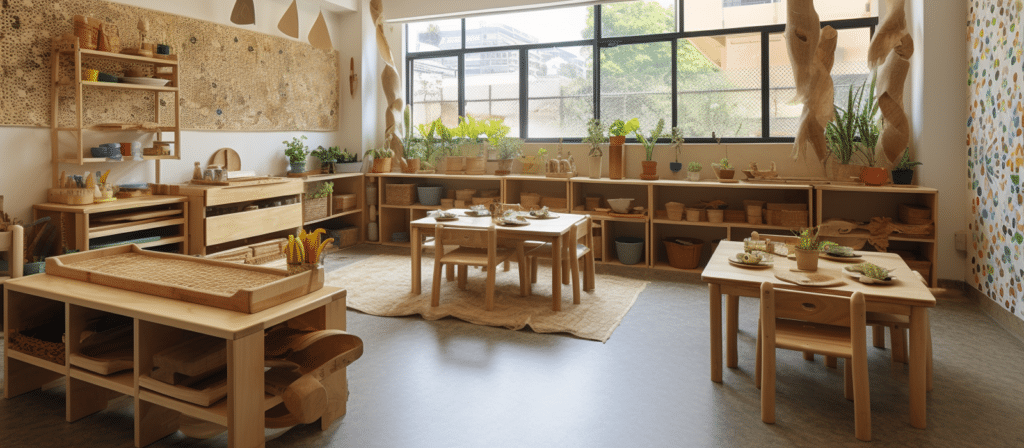
Celebrating Diversity
Rekindling memories of my woodworking escapades, I recall the diverse grains, scents, and colors of hardwoods. The realm of human diversity is equally rich, spanning shades and tones of skin and hair. The educational landscape is evolving, embracing a recalibration towards inclusivity and diversity. It’s a departure from a Euro-centric legacy to a realm where various perspectives, aesthetics, and practices coalesce.
These shifts reflect in the choice of materials and colors in classrooms. Diverse hardwoods mirror the rich tapestry of students’ skin tones. And just as the outside world dapples with patches of yellow and flashes of blue, classrooms find themselves adorned with judicious splashes of color, celebrating the vibrant spectrum of humanity.
Conclusion
The story of classroom design embarked upon a journey from cramped quarters to Montessori-inspired elegance. But as the curtain falls on this chapter, we discern a new narrative. The hymn now harmonizes with a diverse chorus, inviting hardwoods of all hues and textures to the stage. With these changes in place, the heart of learning beats on, echoing a timeless truth: even amidst all these transformations, the allure of the great outdoors remains an irresistible siren’s call for young seekers of wisdom.

